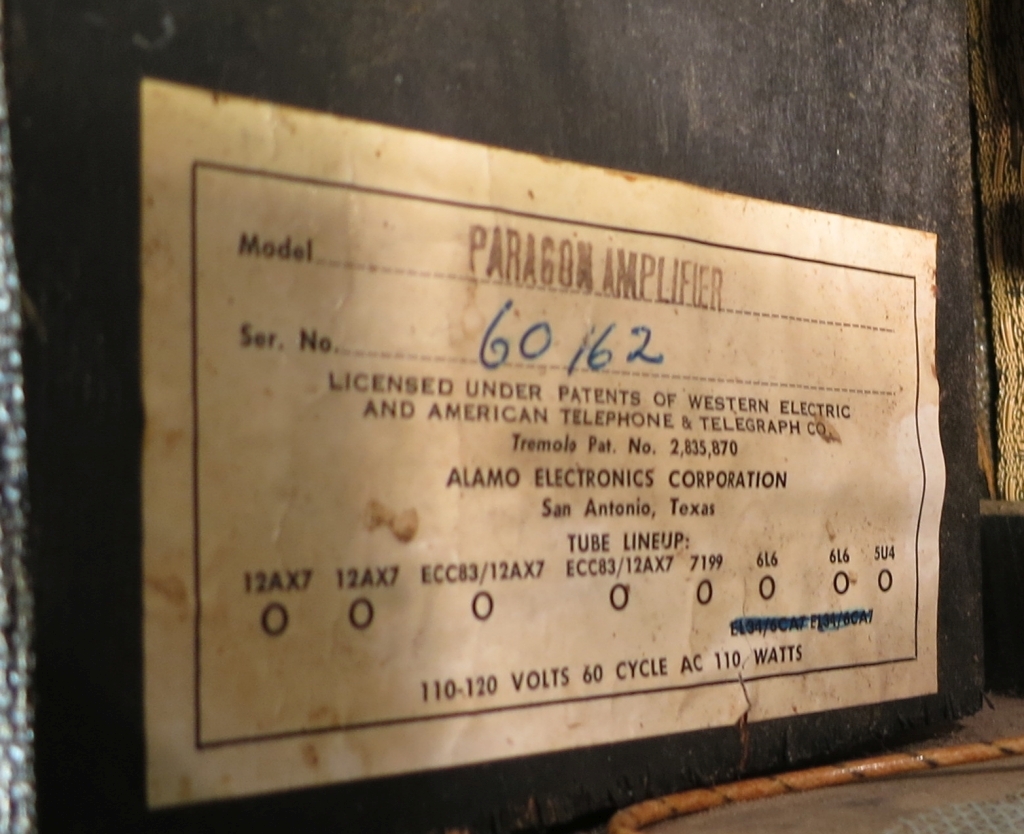theaxeman
Tele-Meister
I picked up a 1963 Alamo Paragon Amp Head on Monday from my local CL, and I think it sounds awesome.
I read the two part article at Vintage Guitar Magazine several times, and what I'm saying here does not coincide with what the article has to say. According the article, the "Piggy-Back" amps didn't come out until 1965, but this amp is a Paragon Piggy-Back with the side buckles and I got the head only.
The CTS pots are dated 1963, the power transformer is dated 1962, and the output transformer and choke are dated 1963. That along with the chrome steel handle, gray silver covering all lean to the amp as being manufactured in 1963.
I love the sound of this amp. Gets loud enough to have plenty of clean headroom, and gets downright crunchy without breaking your ear drums.
I saw in another old thread that some of you have both the Paragon head and cabinet, and I have a question.
What is the Ohm rating of your original speaker, and which jack do you use when hooking it up?
There are two speaker jacks. One is in the lower left corner, and one is in the control console labeled Ext. Speaker.
Anyway, here are a couple of pics of mine. I've got gut shots too, if you'd like to see them.



I read the two part article at Vintage Guitar Magazine several times, and what I'm saying here does not coincide with what the article has to say. According the article, the "Piggy-Back" amps didn't come out until 1965, but this amp is a Paragon Piggy-Back with the side buckles and I got the head only.
The CTS pots are dated 1963, the power transformer is dated 1962, and the output transformer and choke are dated 1963. That along with the chrome steel handle, gray silver covering all lean to the amp as being manufactured in 1963.
I love the sound of this amp. Gets loud enough to have plenty of clean headroom, and gets downright crunchy without breaking your ear drums.
I saw in another old thread that some of you have both the Paragon head and cabinet, and I have a question.
What is the Ohm rating of your original speaker, and which jack do you use when hooking it up?
There are two speaker jacks. One is in the lower left corner, and one is in the control console labeled Ext. Speaker.
Anyway, here are a couple of pics of mine. I've got gut shots too, if you'd like to see them.














